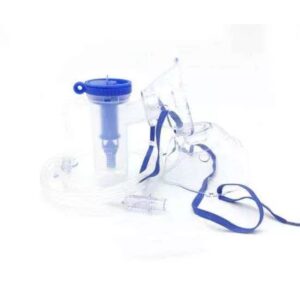Everything You Need to Know About the Saber Product Certificate
An essential document for businesses looking to trade goods inside Saudi Arabia is the Saber Product Certificate. It guarantees that goods meet the requirements of the Saudi Standards, Metrology and Quality Organization (SASO). Businesses that wish to successfully export their goods to the Saudi market must comprehend the Saber certification procedure. Everything you need to know about the Saber Product Certificate, including how to get one and why it is crucial for global trade, will be covered in this post.
The Saber Product Certificate: What is it?
The Saudi government introduced the Saber Product Certificate, an electronic certification system, to expedite the certification of both domestically and imported items. Before products are put on the market, it acts as confirmation that they meet Saudi safety regulations. All regulated products entering Saudi Arabia must have the certificate, which guarantees that the products are high-quality, safe to use, and meet all the requirements.
Because of its significant impact on the Saudi Arabian market, this certification is essential for businesses wishing to grow there. Products may be refused entry into the Saudi market, incur fines, and experience delays in customs processing if a Saber Product Certificate is not obtained.
The Saber Product Certificate: Why Is It Important?
All products, whether locally produced or imported, are guaranteed to meet the stringent safety and quality criteria established by SASO thanks to the Saber certification. This is especially crucial for safeguarding customers and guaranteeing the dependability and safety of goods offered in Saudi Arabia. This accreditation is crucial since non-compliant products can pose a safety risk.
Having the Saber Product Certificate increases a company’s marketability and reputation. Additionally, it assists businesses in avoiding possible legal issues and penalties for failing to comply with SASO laws. Additionally, obtaining the certification allows businesses to offer their goods in Saudi Arabia with confidence and without worrying about regulatory repercussions, which leads to new commercial opportunities.
SASO’s Function in Saber Certification
The rules and specifications that goods must adhere to in order to be allowed to enter the Saudi market are established by the Saudi Standards, Metrology and Quality Organization (SASO). SASO establishes standards for the quality and safety of products and specifies which ones need certification. Before being allowed to pass through customs, all products that fall under SASO’s purview must have the Saber Product Certificate.
By offering a centralized platform for companies, testing labs, and regulatory agencies, the Saber platform is an online solution that streamlines the certification process. To make sure that items continue to fulfill safety standards even after certification has been granted, SASO’s duty also includes periodic reviews and continuous monitoring.
The Saber Product Certificate: How to Get It
The procedure of obtaining the Saber Product Certificate involves several steps and demands close attention to detail. The procedures for obtaining certification for your items are described below:
Step 1: Classification of Products
Determining the category that your product belongs to is the first stage in the Saber certification process. Products have been grouped by SASO according to the degree of regulation needed and their hazards. There are two types of products: regulated and uncontrolled. Products that are regulated must adhere to particular SASO requirements and are subject to more thorough inspections.
Step 2: Choose a Conformity Assessment Body (CAB)
Selecting a Conformity Assessment Body (CAB) approved by SASO comes next after the product has been classified. This outside entity is in charge of examining your product and providing the required test results and records. Working with an authorized CAB is essential since they guarantee that the product satisfies the necessary safety and quality requirements.
Step 3: Documentation and Product Testing
The chosen CAB will thoroughly test your product to make sure it complies with SASO requirements if it is regulated. A Product Certificate of Conformity (PCoC), which attests to the product’s compliance with Saudi rules, will thereafter be issued by the CAB. To receive the PCoC, you will need to submit comprehensive paperwork, such as test results, product specifications, and evidence of compliance.
Step 4: Saber Platform registration
You must register the product on the Saber platform after obtaining the PCoC. The platform is the official method used to handle and process all product certifications. You send your paperwork to SASO for evaluation when you register.
step 5: Getting the Shipment Certificate of Conformity (SCoC)
You must use the Saber platform to apply for a Shipment Certificate of Conformity (SCoC) for every shipment of products. Products must have this certificate in order to pass Saudi Arabian customs. By comparing the products in the shipment to those for which the PCoC was issued, the SCoC confirms this.
Step 6: Clearance of Customs
Your products can be transported to Saudi Arabia as soon as the SCoC is received. Before permitting the products to enter the nation, customs officials will examine the SCoC and the related paperwork. Customs clearance won’t be given without the Saber Product Certificate.
Who Requires a Product Certificate from Saber?
All regulated products require a Saber Product Certificate, which must be obtained by any business wishing to export to Saudi Arabia. Manufacturers, distributors, and importers are all included in this. Products including electrical appliances, toys for kids, building supplies, cosmetics, and chemicals frequently need the Saber certificate. To become certified, each of these product categories needs to fulfill a unique set of SASO requirements.
You might not require the complete Saber certification if your product is classified as unregulated. You must still check with SASO to see if your product is considered unregulated, though. It’s also important to remember that even uncontrolled goods could require a simple Saber platform registration.
The Price of Getting the Product Certificate from Saber
The product category and the intricacy of the certification procedure determine how much it costs to receive the Saber Product Certificate. Depending on the CAB chosen, fees will vary. Conformity Assessment Bodies normally charge fees for testing and producing conformity reports. Additionally, using the Saber platform comes with registration fees.
Although some businesses may be concerned about the expense, it’s crucial to see the certification process as an investment. Businesses may enter the profitable Saudi market, stay out of trouble with the law, and position their goods as dependable and compliant by obtaining the Saber Product Certificate.
The Saber Product Certificate’s advantages
Obtaining the Saber Product Certificate offers companies wishing to export to Saudi Arabia a number of advantages, such as:
Faster Customs Clearance: SCoC-eligible products benefit from quicker customs clearance, which lowers shipping delays and related expenses.
Market Access: Saudi Arabia permits the lawful sale of certified goods, creating a sizable market with strong consumer demand.
Increased Brand Credibility: Obtaining the Saber accreditation helps you build trust with customers and business partners by reaffirming your brand’s dedication to quality and safety.
Legal Protection: By adhering to SASO standards, your business is protected from possible legal action and penalties for noncompliance.
In conclusion
Any company looking to access the Saudi market must get the Saber Product Certificate. It guarantees that your goods fulfill Saudi safety and quality requirements, allowing for a more seamless market launch and quicker customs clearance. Businesses can successfully complete the Saber certification procedure and open up new chances in Saudi Arabia’s expanding economy by following the instructions provided in this article.














Post Comment